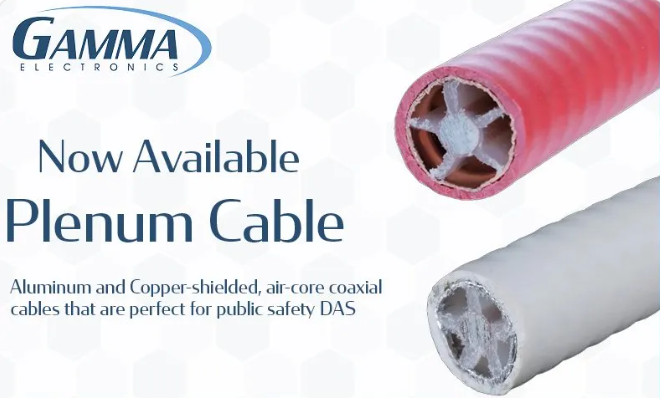What is Heat Shrink Tubing?
You may not be fully aware but heat shrink tubing is a part of your daily life. Heat shrink tubing is used on products ranging from phone cords to motor homes, to boats and airplanes. So what exactly is heat shrink tubing and when and where would you use it?

What is Heat Shrink Tubing?
Heat shrink tubing, (often just called heat shrink), is a rubber sleeve that shrinks down in size when it comes into contact with heat, specifically temperatures around 90° Celsius, (around 200° Fahrenheit). Once it shrinks down it stays shrunk down in an attempt to more permanently seal whatever it is covering.
What is Heat Shrink Tubing Used For?
Heat shrink tubing, more often than not, is used to shrink down over a point of vulnerability and create a permanent to semi-permanent seal that protects that point of vulnerability. The heat shrink, upon shrinking into place, is able to create a seal intended to shield the point of vulnerability from moisture, abrasion, dust, etc. Because heat shrink tubing is able to shrink it becomes a great tool that is able to fit over things like cables, and then shrunk into place as needed.

It is very common to see heat shrink utilized with electronics for these reasons. For example, phone charging cords often have a point of vulnerability between where the cord attaches to the connector at the end of the cord, (like a USB connection). Heat shrink is what is typically used to help seal/protect that point of vulnerability between the cord and the connection.
This is why we say that heat shrink is a form of cable protection, as heat shrink is commonly used on wires, joints, splices etc., but it also is often used to protect connectors, terminals, and more.
What is Heat Shrink Made Of?
The most commonly used material for heat shrink tubing is polyolefin. Polyolefin is a very durable material with a high temperature threshold, which for good use in applications that have high operating temperatures like manufacturing, mechanical, and industrial settings. Industries that often use polyolefin include the military, aerospace, railway, and electronics.
PVC is another popular material used for heat shrink tubing, although it does not have as high of a temperature threshold as does polyolefin, and it sees more limited usage as a result. It is however, highly abrasion resistant and a great option when higher operating temperatures are not a concern.
There are many other materials used for heat shrink tubing, many of which are specific to the needs of different industries. For example, we manufacture heat shrink tubing from materials, (besides polyolefin and PVC), that include neoprene, viton, polyvinylidene fluoride, and more.
How Do I Choose the Right Heat Shrink Tubing?
If you’re new to heat shrink tubing, choosing the right tubing can be a bit tricky. Heat shrink tubing comes in many different sizes, different shrink ratios, and there are many different types that offer unique characteristics. The first thing to know is that heat shrink tubing sizes are listed in a before shrinking size. So measure what it is you need the heat shrink to fit over and make sure you choose a size larger a little larger than that. For example, if we wanted to make sure our heat shrink tubing would fit over an iPhone cable, (like we did in the section below), we would need to make sure the heat shrink was larger than the cable and the connector at the end of the cable. For an iPhone cable we chose a heat shrink tubing sized at 3/8 of an inch.
The next thing to know, is the shrink ratio. Shrink ratio measures the difference between the size of the tubing before and after it shrinks. For example, we chose to use a 3 to 1, (usually written in ratio form as 3:1), heat shrink tubing on the iPhone cord, which means the tubing starts 3 times larger than what it shrinks down to. We offer heat shrink tubing in 2:1, 3:1, 4:1, and 6:1 shrink ratios.
The last thing to be aware of when selecting your heat shrink tubing are any additional special qualities or characteristics that you might need. For example, there are diesel and fluid resistant types of heat shrink out there, as well as heat shrink that is UV resistant. For the iPhone cord we chose to use an adhesive lined heat shrink tubing that will make sure the heat shrink glues itself in place.
Of course, we also offer different colors of heat shrink tubing, which includes clear heat shrink tubing. If you need help in choosing the right heat shrink for your project feel free to contact us. You can also see all our heat shrink tubing by clicking here, or on the button below.
How to Use Heat Shrink Tubing
Heat shrink tubing is pretty easy to install as all it requires is a good heat source. We’ve created a step-by-step guide on “How to Use Heat Shrink Tubing,” which you can find here. You can also watch our video in which we take you through those same steps in 2 minutes.
How to Use Heat Shrink Tubing Without a Heat Gun
If you’re able, the safest choice for shrinking heat shrink is to use a heat gun, as it does not have an open flame. If you don’t have a heat gun the next easiest solution, (but not as safe), is to use a lighter or blow torch.
The installation process is essentially the same. Rotate the heat shrink as you have the heat next to it, making sure to not hold heat in one spot for too long as it can burn through the heat shrink, (this becomes even more important when using a lighter or blow torch). You need to be especially careful with a lighter or blow torch to make sure to not damage the cable etc. you are applying the heat shrink to.
Will a Hair Dryer Shrink Heat Shrink Tubing?
Maybe. We have tried shrinking heat shrink with hair/blow dryers before and it produces mixed results. Sometimes the heat shrink doesn’t shrink as well as it could or the blow dryer just takes a lot longer to get the heat shrink to fully shrink.
The issue is that most hair dryers, (or blow dryers), don’t reach the same temperatures as a heat gun. As we said before, most heat shrink will shrink around 200° Fahrenheit, (about 90° Celsius). Hair/blow dryers on the other hand tend to range in temperatures from about 80° to 140° Fahrenheit. If you get a hair/blow dryer that is capable of reaching those higher temperatures it might work on the heat shrink, but it will take longer to shrink down than it would if you were using a heat gun, lighter, or a blow torch.
As you might imagine, the results can vary depending on the temperature of your hair/blow dryer, but also on the type of heat shrink tubing you are trying to shrink. Different heat shrinks will shrink at different temperatures and if your hair/blow dryer doesn’t reach that temperature then there is no way to guarantee it will work.
What is the Difference Between Heat Shrink vs. Cold Shrink?
As the name implies, heat shrink requires heat in order to shrink/be installed. Cold shrink does not require any form of heat for installation. This is why cold shrink is called “cold shrink,” because it does not require heat.
Beyond the installation method there are a lot of other differences between heat shrink and cold shrink, with each of them having their pro’s and con’s. The short answer is that cold shrink is typically better for use outdoors as it has far better weatherproofing capabilities. That isn’t to say you can’t use heat shrink outdoors, (we have a UV resistant heat shrink as a prime example of heat shrink you can use outdoors), but the vast majority of the time cold shrink will outperform heat shrink in outdoor scenarios where weather is a concern.
Check out our video, “Heat Shrink vs. Cold Shrink,” where we explain the differences between the two in greater detail. You can also learn more about cold shrink by clicking here.
Conclusion
Heat shrink tubing is an amazing tool that has seemingly endless possibilities/applications. At Gamma Electronics we are pleased to offer some of the industry’s best heat shrink tubing products, ranging from printable heat shrink to clear, medical grade heat shrink tubing. Contact Us to get help on choosing the best heat shrink for your next project, or click here to view all of our heat shrink tubing products.





